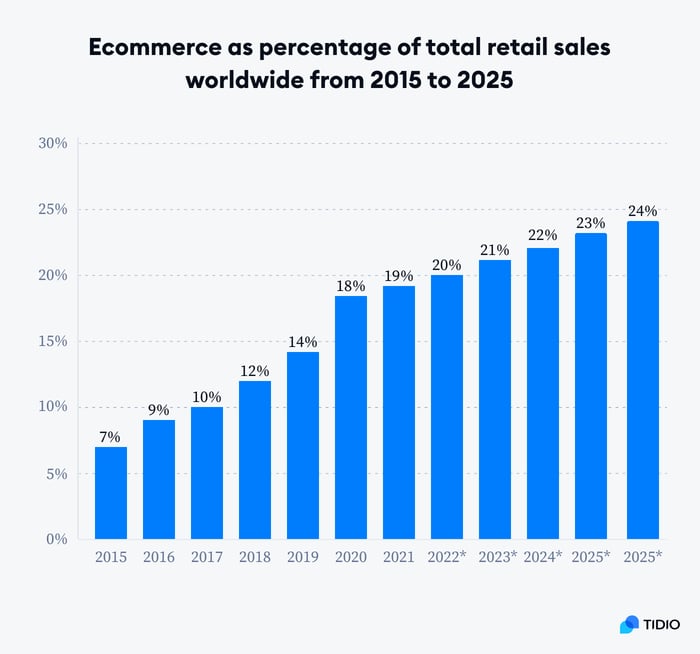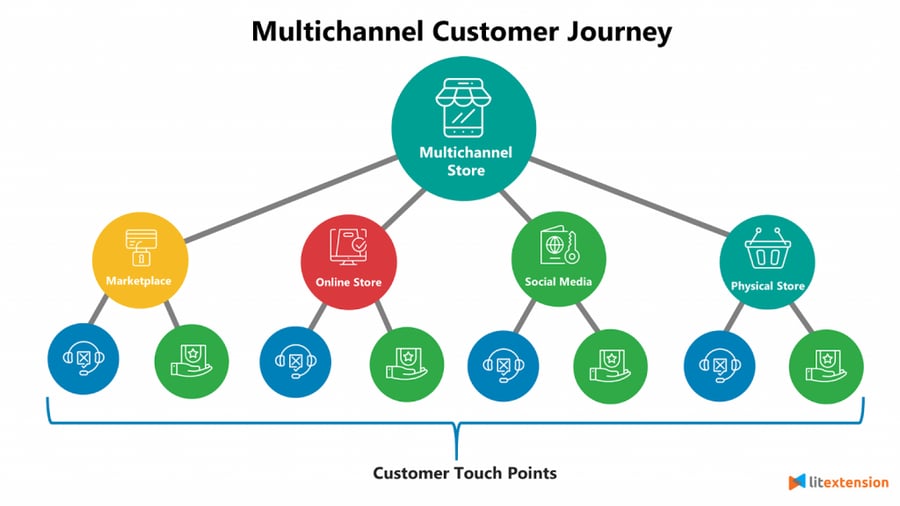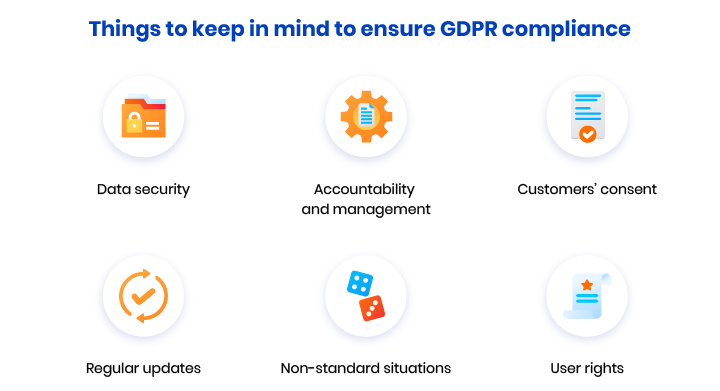
With over 3.8 billion users worldwide, eCommerce is essential to most modern businesses.
With the rise in digitalization and growing customer usage, customer expectations have soared, and the consequences of not keeping up have grown dire.
Cyber attacks on financial websites surged by nearly 200% in 2022 alone. Ensuring robust eCommerce security is crucial for any business aiming to thrive in today's competitive online environment.
In this article, we’ll discuss the future of eCommerce security, consider expert predictions on evolving threats, and explore how businesses can future-proof their operations to ensure optimal safety and customer experience.
Introduction to eCommerce Security
Trust is a fundamental pillar of customer loyalty and brand reputation in eCommerce.
A secure eCommerce platform protects customer data. With rising cyber threats and changing customer needs, robust security is essential. Companies need this to avoid financial losses. It also helps build a brand that customers trust and stay loyal to.
Ongoing customer loyalty and brand trust are essential for any business wanting to sell online in the future.
The Evolving Threat Landscape
Understanding eCommerce Threats
Ecommerce websites are lucrative targets for cybercriminals. The threat landscape continually evolves, with malicious actors employing sophisticated methods to exploit systems and users. The most notable threats to online stores, which experts foresee further developing, are phishing, malware, and fraud.
- Phishing: Cyber adversaries employ phishing techniques to trick users into revealing sensitive information like login credentials or credit card details.
- Malware: Malicious software, or malware, helps cyber criminals hack into systems where they can steal sensitive data or disrupt operations. The rising number of malware attacks relates directly to the growth of eCommerce, which highlights the future need for robust cybersecurity measures.
- Fraud: In 2022, eCommerce merchants in the U.S. reported an average of over 1,200 fraud attacks per month, marking a more than 50% increase from previous years. Companies need to be aware of fraudulent activity and how to prevent it.
Changing Consumer Behavior
The continuous shift in consumer behavior plays a pivotal role in the future landscape of eCommerce. As consumers increasingly prefer online shopping, they also expand the attack surface for cybercriminals.
Increased Online Shopping
The convenience and variety of online shopping have led to its increased adoption.
With more people shopping online, more personal and financial data is shared on eCommerce websites than ever, allowing cybercriminals to exploit this data for financial gain.

Source: Tidio
Demand for Frictionless Transactions
The modern consumer expects seamless, quick, and easy transactions, a demand that drives online stores to reduce the steps and checks required to complete a transaction.
This, in turn, lowers the security barriers on eCommerce websites and makes it easier for cybercriminals to exploit the system. Simplifying transactions for a better user experience might inadvertently reduce security checks, creating openings for malicious activities like fraud.
Multi-Channel Shopping
Modern consumers often engage with brands across multiple online, mobile, and in-store channels. This multi-channel shopping behavior increases interaction and, potentially, vulnerability.
More channels mean more data points for cyber criminals to exploit. If not appropriately secured, each interaction offers cybercriminals an entry point for a security breach.

Source: LitExtension
Use of New Payment Methods
With the advent of digital wallets, cryptocurrencies, and other new payment methods, consumers are diversifying how they pay for online purchases.
While these methods offer more convenience, they also introduce new security challenges. Ecommerce platforms must stay updated on each payment type's security measures to protect against fraud.
Advancements in Security Technologies
Like customer demands and the threat landscape, security technologies are also evolving.
Artificial Intelligence and Machine Learning
Artificial Intelligence and Machine Learning are now instrumental in augmenting eCommerce security — and will only be more prevalent. By analyzing vast quantities of data, these technologies can help in real-time transaction monitoring, which is crucial for detecting and mitigating fraudulent activities as they occur.
Additionally, rules-based AI systems can enhance security by establishing predefined guidelines for identifying and responding to potential threats.
Using advanced algorithms and predictive analytics enables eCommerce platforms to identify unusual patterns that may indicate fraudulent transactions or attempts at data breaches.
This proactive approach to security significantly reduces the risk of fraud and other security threats, ensuring a safer shopping experience for consumers.
Blockchain Technology
Blockchain technology is emerging as a robust solution to many eCommerce security challenges. Its transparency and traceability make it an excellent tool for securing transactions and reducing fraud.
For instance, blockchain technology creates immutable records of transactions, making it virtually impossible for malicious actors to alter transaction data. The decentralized nature of blockchain technology also cuts out intermediaries, which are often points of vulnerability in transaction processes.
Other Technological Innovations
While Artificial Intelligence and Machine Learning are pivotal in transaction monitoring and fraud detection, other technological innovations are also making significant strides. Innovations like interactive voice response (IVR) systems are also emerging as key tools in enhancing customer service and security. These systems streamline customer interactions and add a layer of security by verifying customer information and guiding them securely through transactions.
Regulatory Shifts and Compliance
A parallel evolution in regulatory frameworks accompanies the rapidly evolving eCommerce landscape. Global lawmakers are revising data protection laws to address the changing dynamics of online commerce, focusing on ensuring consumer privacy and data security.
Ecommerce platforms must adapt to these changes to build trust, avoid legal penalties, and ensure a seamless customer experience.
Anticipated Regulatory Changes
As cyber threats continue to evolve, so does the regulatory landscape. Anticipated regulatory changes are expected to bolster data protection, privacy, and cybersecurity norms.
Online businesses may face new compliance requirements that mandate stronger data encryption, regular security audits, and transparent data handling practices. Staying abreast of these anticipated changes and preparing for compliance is crucial for eCommerce websites to mitigate legal risks and maintain consumer trust.
Global Data Protection Laws
Because eCommerce is a global network, there is particular difficulty in creating standardized protection laws to cover platforms and users from different regions.
Laws like the General Data Protection Regulation (GDPR) in Europe and the California Consumer Privacy Act (CCPA) in the United States are a good starting point. These laws guide companies on what they must do to ensure customer data is safe and secure, such as upholding stringent data protection standards.

Source: RubyGarage
Future Predictions
Given the developments in technology and legislation, the future is set to be a very different landscape for eCommerce cybersecurity than what it currently is.
Advanced Machine Learning Algorithms
Machine Learning (ML) algorithms will become significantly advanced, enabling real-time analysis of vast data sets to identify and thwart security threats swiftly. These algorithms will allow eCommerce websites to instantaneously detect anomalies in transaction patterns, substantially reducing the window of opportunity for fraudsters.
Blockchain for Enhanced Transparency and Security
Blockchain technology will see broader adoption in eCommerce for its ability to provide enhanced transparency and security. The immutable nature of blockchain will offer a tamper-proof record of transactions, which will be instrumental in fraud prevention and ensuring transaction data integrity.
Rise of Biometric Verification
With the continuous surge in mobile commerce, biometric verification methods like fingerprint and facial recognition will become standard features for identity verification. These methods offer a more secure yet user-friendly alternative to passwords, reducing the likelihood of unauthorized access.
Quantum Computing and Cybersecurity
The advent of quantum computing presents a paradigm shift. On one hand, it will significantly bolster cybersecurity measures by enabling complex encryption algorithms. On the other, it poses a threat as it can decrypt currently secure encryption algorithms, necessitating the development of quantum-resistant cryptographic methods.
Evolution of Global Cybersecurity Standards
As cyber threats become increasingly borderless, a move towards more unified global cybersecurity standards will likely occur. Harmonized regulations will facilitate cross-border eCommerce activities, making it easier for platforms to comply with security standards across different regions.
Continuous Consumer Education
Ecommerce businesses will invest more in educating consumers on safe online shopping practices. A well-informed consumer base will act as a first line of defense against phishing scams and other user-targeted attacks.
Integrated Security Frameworks
Developing and adopting integrated security frameworks that provide end-to-end security solutions will gain traction. These frameworks will encompass everything from secure payment processing and inventory management to robust data encryption, providing a comprehensive security umbrella under which eCommerce websites can operate securely.
8 Ways to Prepare for the Future of eCommerce Security
The trajectory of eCommerce security underscores the need for websites to be in a perpetual state of readiness. Continuous learning and adaptation are imperative as the threat landscape expands and transforms. Here are recommendations on how eCommerce businesses can brace for upcoming security challenges.
1. Embrace Technological Advancements
Investing in and adopting the latest security technologies and processes, like cloud penetration testing, will be crucial. Technologies like Artificial Intelligence (AI), Machine Learning (ML), and the blockchain will play pivotal roles in enhancing security measures. Staying updated on these technologies and integrating them into the security framework will help in preemptively addressing potential security threats.
2. Foster a Culture of Continuous Learning
Creating a culture of continuous learning among the workforce is essential. Regular training on emerging cybersecurity threats and the latest security protocols will equip employees with the knowledge and skills necessary to mitigate risks. Encouraging certifications and providing learning resources will foster a security-centric culture.
3. Engage in Proactive Threat Hunting
Rather than reacting to security incidents post-occurrence, adopting a proactive approach to threat hunting will be beneficial. Employing dedicated teams to monitor and analyze the network for potential threats continuously will help identify and neutralize threats before they can cause damage.
4. Strengthen Legal and Regulatory Compliance
Staying updated on and compliant with the evolving regulatory landscape is imperative. Engaging legal experts to ensure compliance with global data protection laws and other relevant regulations will help avoid legal pitfalls and build trust with consumers.
5. Collaborate with the Cybersecurity Community
Collaboration with the cybersecurity community can provide invaluable insights into emerging threats and best practices. Participating in forums, sharing experiences, and learning from community members will contribute to more robust security.
6. Enhance Consumer Awareness
It will also be crucial to educate consumers on safe online shopping practices and provide them with the tools to protect themselves. This not only helps in reducing phishing and other user-targeted attacks but also builds trust.
7. Conduct Regular Security Audits
Regular security audits will help identify vulnerabilities and assess the effectiveness of the current security measures. These audits provide an opportunity to rectify identified weaknesses and enhance security overall.
8. Plan for Incident Response and Recovery
A well-defined incident response and recovery plan is crucial for minimizing the impact of a security breach. Such a plan ensures swift action in the face of an incident, minimizing damage and ensuring a faster recovery.
Moving Forward
The world of online shopping is growing fast, but it also faces many security challenges. As we move forward, eCommerce websites must stay ahead of these challenges to keep their customers safe.
By adopting new security technologies like AI, ML, and the blockchain, alongside keeping up with new laws, online businesses can build a strong defense against cyber threats. Continuous learning and a readiness to adapt to new challenges are also vital. The goal is clear: create a secure and trustworthy shopping experience for all users as we look to the future.





Leave a reply or comment below